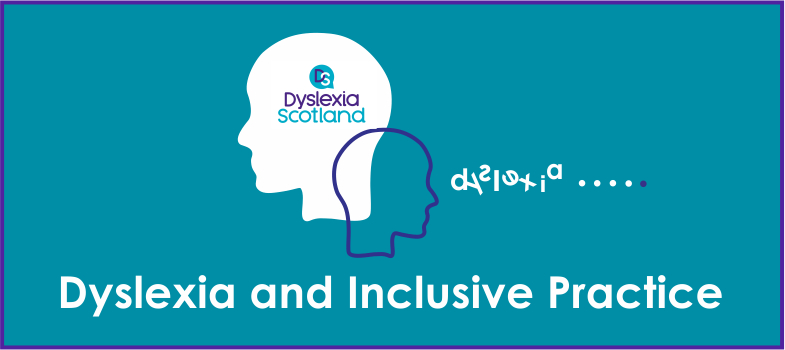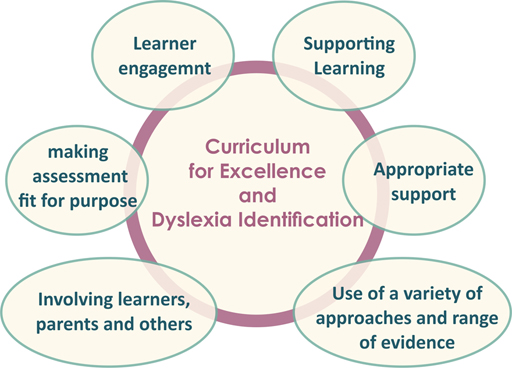2.1 Identification pathway and Curriculum for Excellence
Section 1.2 highlights that the identification of dyslexia, indeed for any additional support needs is not an activity which takes place outwith the principles and practice of Curriculum for Excellence. Figure 8 demonstrates the connectivity and symbiotic relationship which should be in place.
Reaching the conclusion that a young person is dyslexic is not something that should happen through a one-off test. It should be an ongoing process and a response to observing a child or young person’s difficulties.
Clearly how we assess is dependent on knowing what it is that we are assessing, and for that reason we need to start with a definition of dyslexia. In Scotland it is recommended to use the 2009 working definition that was developed by the Scottish Government in conjunction with the Parliamentary Cross Party Group and Dyslexia Scotland and which has been agreed by the Association of Scottish Principal Educational Psychologists (ASPEP).
The process of assessment should begin with observation – which is something that every teacher does. When a child is observed to be experiencing difficulties for example it is considered that they are not making appropriate progress in literacy, then that will be the start of the process.
Specific approaches and interventions can be put in place with the intention of ensuring the child makes good progress and makes up for any gaps that have become apparent
Introduction

